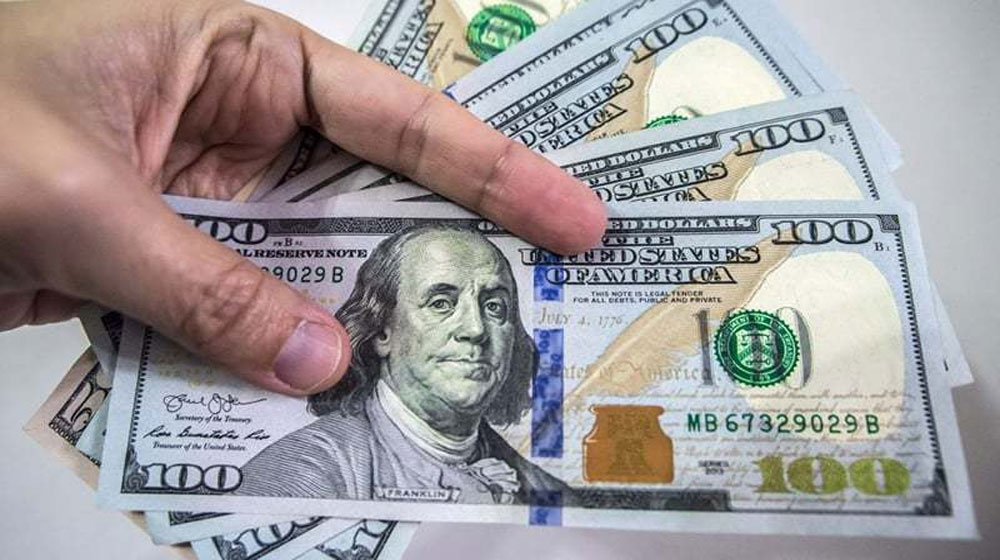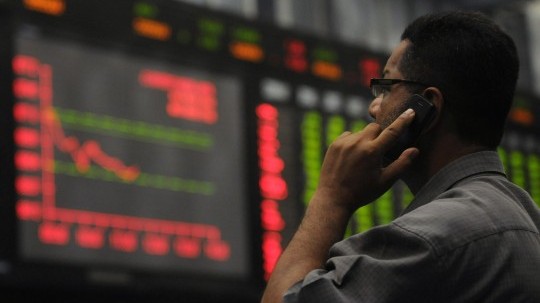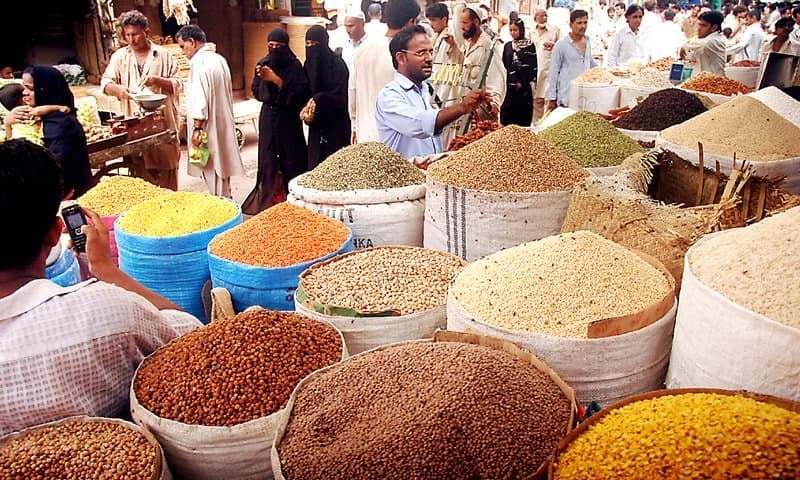What's behind Pakistan's pandemic-defying remittance boom?
The Covid-19 pandemic has ravaged economies globally, but Pakistan has been on the receiving end of a boom that could continue until the end of this year.
Remittances, the money sent home by migrant workers, are an important and under-acknowledged aspect of the global economy, giving poor families a lifeline and helping to prop up cash-strapped developing economies.
These transfers account for more than 5 percent of GDP in
at least 60 low and middle income countries. Pakistan is one of them. Remittances to the South Asian nation
rose from over 5 percent of GDP in 2009 to almost 8 percent in 2019, according to the World Bank.
This money has helped bolster the country’s depleted foreign currency reserves and mitigate recurrent balance of payments problems caused, in part, by chronically weak exports and a reliance on imported fuel.
In 2019 the situation spiralled out of control when twin fiscal and current account deficits forced prime minister Imran Khan to seek a $6 billion bailout from the International Monetary Fund (IMF).
When the coronavirus spread last year and countries across the world went into lockdown, remittances were widely expected to drop precipitously as economies crashed and migrants lost their jobs.
At the same time, energy prices nosedived to unprecedented lows, hammering oil-producing states like Saudi Arabia and the United Arab Emirates (UAE) which are believed to host around 2.5 million and 1.5 million Pakistanis, respectively.
And, indeed, remittances did decline for many recipient countries in April-May 2020. In India, for example, they fell by 10 percent. But, surprisingly, Pakistan experienced an increase in this period.
The rest of the year saw a further uptick. From July to December, 2020, the country received more than
$14 billion in remittances, a rise of almost 25 percent on the same period in 2019, with Saudi Arabia and the UAE accounting for about half of the total.
These inflows have helped stabilise Pakistan’s economy, which registered a current account surplus for five months in a row from July to November and saw its foreign exchange reserves surge to the highest level in years.
Transfers might have spiked initially because workers lost jobs in the spring and off-loaded their savings before moving back to Pakistan. However, remittances have continued to increase throughout the year, pointing to other factors.
Moving parts
“The initial hypothesis was that workers were coming back and transferring their savings, which is why there was a spike,” according to Uzair Younus, a Visiting Senior Policy Analyst at the United States Institute of Peace and host of the podcast
Pakistonomy.
“But the numbers continue to be strong, leading some to talk about the fact that this is due to informal channels being closed due to a decline in travel,” Younus told TRT World.
Travel restrictions have prevented workers from carrying remittances by hand, forcing them to send money via banks, money transfer operators or mobile platforms. The funds are therefore registered, leading to an increase in the official statistics.
Migrant labourers work in Dubai, United Arab Emirates. Saud Arabia and the UAE are believed to host around 2.5 million and 1.5 million Pakistanis, respectively. (Reuters)
“A lot of people are using digital means to send money to Pakistan,” said Samiullah Tariq, head of research and development at Pakistan Kuwait Investment Company. Expatriates are increasingly using digital apps like Xoom, which are “cheaper and much more convenient” than going to the bank or delivering money by hand, Tariq told TRT World.
According to the World Bank’s Global Knowledge Partnership on Migration and Development (KNOMAD), in its latest
Migration and Development Brief, “The negative impact of the COVID-19–induced global economic slowdown has been somewhat countered by the diversion of remittances from informal to formal channels.”
Anti-money laundering efforts by Pakistan’s government may also explain the increase, according to Samiullah Tariq. Eager to comply with Financial Action Task Force (FATF) requirements, Islamabad has cracked down on the informal hawala system. “That has also contributed towards usage of official channels to transfer money,” Tariq told TRT World.
The increase in remittances is, in this sense, artificial, as the actual funds being transferred remain the same, regardless of whether they are carried by hand or sent electronically. But, according to Uzair Younus, “the economic stability metrics take into account official and formal flows. Which is why a redirection into formal channels is an important shift that does have an impact on overall stability.”
The World Bank also attributes the increase to the so-called ‘Hajj effect’ – “Pakistani migrants remitting home the money saved for pilgrimage to Mecca due to a sharp reduction in the number of Hajj visas to contain the pandemic.”
Migrants had funds at their disposal that would ordinarily have been spent on pilgrimage, enabling them to send more money back to Pakistan.
Exchange rate dynamics may be a factor, too, according to a
new report by Oxford Economics. Pakistan’s rupee depreciated strongly against the US dollar in 2020. Remittances from the Gulf are often made in local currencies, which are pegged to the dollar. This money can therefore be exchanged for more rupees than would have been the case before the pandemic, attracting higher inflows.
There is another possible explanation. “The increase in remittances from Pakistani workers in the Gulf and elsewhere can be explained by the increase in demand for workers in e-commerce and other industries which benefited from the pandemic,” said Donghyun Park, a principal economist at the Asian Development Bank, speaking to TRT World in his personal capacity.
Businesses have been closed by lockdowns, leading to a boom in online shopping and home delivery. Locals have been reluctant to work in logistics and distribution, due to fear of infection, so migrant workers “stepped in to fill the void,” Park told TRT World.
The Pakistani government has also offered tax incentives to boost remittances, cutting withholding tax on bank transfers in July 2020. “The government’s efforts to attract remittances and migrants’ savings through tax incentives may be working, although these are yet to be evaluated,” according to the World Bank’s latest migration brief.
Furthermore, the bank notes that “cross-border payments for goods, services, and investments could be reclassified as remittances” so as to take advantage of tax incentives.
A correction ahead?
Last year Pakistan also introduced Roshan Digital online banking to facilitate remittances, part of a wider digitisation push by Prime Minister Imran Khan’s government. Approximately 70,000 Roshan Digital accounts have
been opened so far, according to the State Bank of Pakistan.
“It’s the first time in Pakistan that an account-opener does not have to come physically to open an account,” said Samiullah Tariq. “You can open it digitally from any location.”
However, despite the increase in remittances to Pakistan in 2020, the World Bank expects a decline this year. “The underlying fundamentals supporting remittances remain weak,” KNOMAD told TRT World through a spokesperson.
“Lower level of economic activity, lower oil prices, and lower employment of migrant workers in the GCC region are likely to impact flows.”
Many Pakistani expatriates have left the Gulf since the coronavirus crisis began, and there has been a sharp drop in new migrations, according to
data from Pakistan’s Bureau of Emigration and Overseas Employment.
Motorcyclists ride past billboards showing the portraits of Abu Dhabi's Crown Prince, Sheikh Mohammed bin Zayed Al Nahyan, and Pakistani Prime Minister Imran Khan, in Islamabad, Pakistan, Sunday, Jan. 6, 2019. (AP)
Moreover, GCC governments are stepping up efforts to employ more local workers and reduce their dependence on migrant labour. Saudi Arabia, for example, has intensified its ‘Saudization’ drive across
various employment sectors.
Indeed, remittances from GCC countries to Pakistan were “either flat or declining” for years before the uptick in 2020, according to the World Bank, “perhaps reflecting the indigenization policy”.
The UAE last November stopped issuing new work visas for migrants from Pakistan and other countries. This was apparently a temporary measure to prevent the spread of the coronavirus.
However, Indians were not denied visas, even though their country has a much higher case tally than Pakistan, leading some to believe that the UAE’s decision was
political.
Tensions have been running high between Abu Dhabi and Islamabad of late. Not only is Pakistan growing increasingly close to Turkey, an adversary of the Emirates, but it has refused to follow the UAE and other Muslim nations in
recognising Israel.
Abu Dhabi has, for its part, forged closer ties to India and declined to criticise prime minister Modi for his crackdown in Kashmir.
TRT World asked the UAE’s foreign minister, H.H. Sheikh Abdullah Bin Zayed Al Nahyan, why Indians had not also been denied visas, but did not receive a reply. Pakistan’s foreign ministry did not respond to a query about the reason for the UAE’s visa decision.
The denial of new visas to Pakistanis will negatively impact remittances. “The UAE visa decision is a real concern and is not a good sign,” said Uzair Younus.
“The major impact of these restrictions will be in KPK [Khyber Pakhtunkhwa province], where about 10 percent of the average household income comes from foreign remittances,” Younus told TRT World.
However, despite these concerns, Gulf countries will still depend on Pakistani migrants, according to Qamar Huda, an analyst at Gulf State Analytics, a Washington DC-based risk consulting firm.
“Given the population size of GCC, the limited talent pool of locals and the immense need for international talent for growing markets, GCC countries will continue depending on labour from other countries, including Pakistan,” Huda told TRT World.
Reliance on migrant workers might even increase, according to Donghyun Park. “We expect economic growth in GCC and globally to rebound strongly in 2021,” Park told TRT World. “Therefore, the demand for workers will rebound strongly.”
“At the same time, the fear of infection will persist for some time, which means that the demand for foreign workers in industries, occupations, and activities will persist. Therefore, if anything, we can expect Covid-19 to boost demand for foreign workers,” Park said.
Samiullah Tariq expects remittances to continue their upward trajectory in 2021, reaching “$27-28 billion” for the full fiscal year. The central bank expects a slightly lower total of $24-26 billion, but that would still be an increase on 2019-20.
Much remains uncertain about these issues, and the World Bank is launching an International Working Group on Improving Data on Remittances to boost data collection and dissemination.
That might explain how Pakistan managed to defy gravity while the global economy was falling off a cliff.
The Covid-19 pandemic has ravaged economies globally, but Pakistan has been on the receiving end of a boom that could continue until the end of this year.

www.trtworld.com















